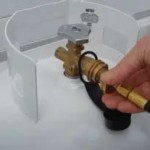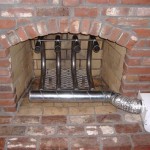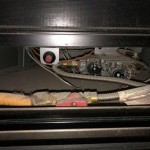Cleaning Brick Fireplace Fronts: A Comprehensive Guide
A brick fireplace provides a focal point within a home, adding warmth and visual appeal. However, consistent use leads to the accumulation of soot, ash, and creosote, diminishing the aesthetic and potentially posing health and safety hazards. Therefore, regularly cleaning the brick fireplace front is crucial for maintaining both its appearance and the overall indoor air quality.
The cleaning process requires careful consideration, as brick is a porous material susceptible to damage from harsh chemicals and abrasive cleaning methods. Selecting the appropriate cleaning agents and techniques is vital to prevent discoloration, etching, or structural degradation of the brick.
Assessing the Level of Soiling
Before undertaking any cleaning efforts, it is essential to assess the extent of the soiling. Light soiling typically involves a thin layer of dust and soot, which can often be removed with gentler cleaning methods. Heavy soiling, characterized by thick deposits of creosote or stubborn stains, requires more aggressive cleaning agents and techniques.
The assessment should also include an evaluation of the brick's condition. Check for any cracks, chips, or loose mortar joints. Addressing these issues before cleaning prevents further damage during the cleaning process. Damaged brick will absorb more cleaning solution, potentially leading to staining or further deterioration.
Furthermore, identify the type of brick. Some bricks are more porous than others, and this affects the absorption rate of cleaning solutions. Test cleaning solutions on a small, inconspicuous area first, regardless of the brick type, to ensure it does not cause discoloration or damage.
Choosing the Right Cleaning Supplies and Solutions
The choice of cleaning supplies and solutions depends on the type and severity of the soiling. For light soiling, a mixture of mild dish soap and warm water is often sufficient. Apply the solution with a soft brush or sponge, gently scrubbing the brick surface. Rinse thoroughly with clean water and allow the brick to air dry.
For more stubborn stains, consider using a solution of trisodium phosphate (TSP). TSP is a powerful cleaning agent that effectively removes soot and creosote. However, it is a harsh chemical and should be used with caution. Wear gloves and eye protection when handling TSP, and ensure adequate ventilation. Follow the manufacturer's instructions carefully when mixing and applying TSP.
Another option is to use a commercial brick cleaner specifically designed for fireplace fronts. These cleaners are formulated to remove soot and creosote without damaging the brick. Always read and follow the manufacturer's instructions for application and safety precautions.
Avoid using abrasive cleaners, such as scouring pads or steel wool, as they can scratch the brick surface. Similarly, avoid using acidic cleaners, such as muriatic acid, as they can etch the brick and damage the mortar joints.
Gather the following tools: a stiff-bristled brush (preferably with nylon bristles), a soft brush or sponge, a bucket, clean water, rubber gloves, eye protection, and drop cloths or plastic sheeting to protect the surrounding area.
Step-by-Step Cleaning Process
Begin by preparing the area. Cover the floor and any nearby furniture with drop cloths or plastic sheeting to protect them from cleaning solutions and debris. Wear rubber gloves and eye protection to protect your skin and eyes from potential irritants.
Dry brush the brick surface to remove loose soot and ash. Use the stiff-bristled brush to scrub the brick thoroughly, paying particular attention to areas with heavy deposits. Use a vacuum cleaner with a brush attachment to remove the dislodged debris.
Mix the cleaning solution according to the manufacturer's instructions or the recommended proportions for homemade solutions. Apply the solution to the brick surface with a soft brush or sponge. Allow the solution to dwell on the brick for the recommended time, typically 5-10 minutes. This allows the cleaning agents to penetrate and loosen the soot and creosote.
Scrub the brick surface with the stiff-bristled brush, focusing on areas with stubborn stains. Use a circular motion to dislodge the grime. Rinse the brick thoroughly with clean water, using a sponge or cloth to remove any remaining cleaning solution. Repeat the rinsing process until all traces of the cleaning solution are gone.
Allow the brick to air dry completely. This may take several hours or even a day, depending on the humidity and the porosity of the brick. Ensure adequate ventilation to facilitate drying.
After the brick is completely dry, inspect it for any remaining stains or discoloration. If necessary, repeat the cleaning process, focusing on the affected areas. Consider applying a brick sealant to protect the cleaned surface from future staining and make it easier to clean in the future. Follow the manufacturer's instructions when applying the sealant.
Dispose of used cleaning solutions and materials properly, following local regulations. Store unused cleaning solutions in a safe place, out of reach of children and pets.
Regular cleaning, performed every few months, can prevent the buildup of heavy soot and creosote, making the cleaning process easier and preserving the appearance of the brick fireplace front. Consistent care and attention will ensure that the fireplace remains a beautiful and functional feature of the home.

How To Clean A Fireplace Diy Basics

How To Clean Brick Fireplaces Mantels Hearths And More My Space

How To Clean Fireplace Bricks 9 Steps With S Wikihow

How To Create An Exposed Brick Feature Wall Or Fireplace And Clean Maintain It Like Expert Manchester Evening News

How To Clean Brick The Home Depot

How To Clean A Brick Fireplace The Family Handyman

How To Clean Brick The Home Depot

4 Ways To Clean Soot From Brick Wikihow

How To Clean A Fireplace Diy Basics

How To Clean A Brick Fireplace With Scrubbing Bubbles 2024 Today S Homeowner
Related Posts








